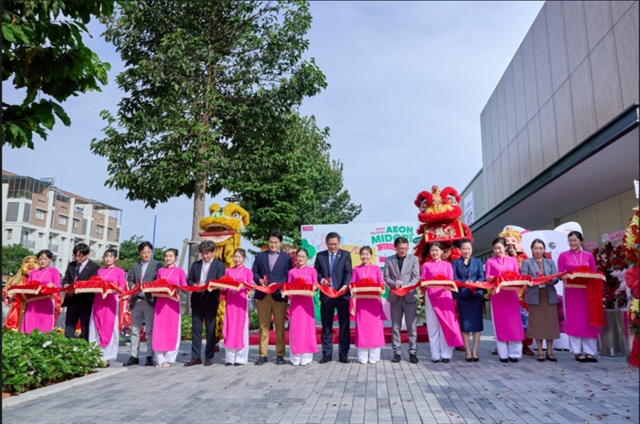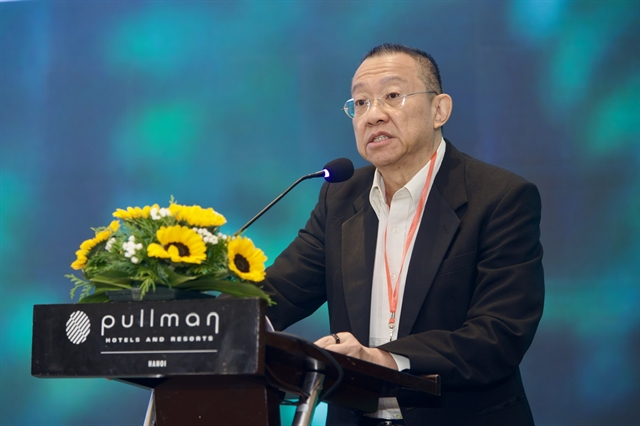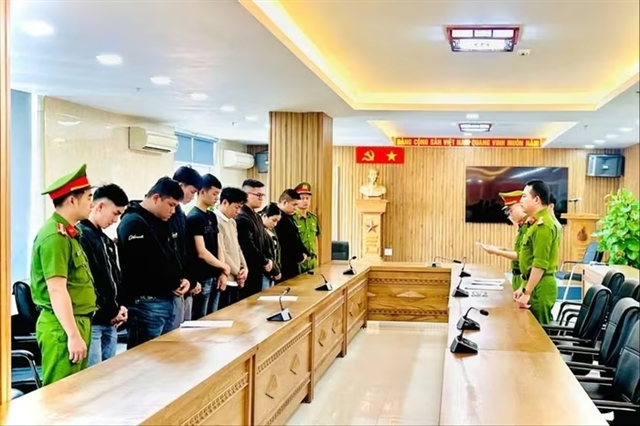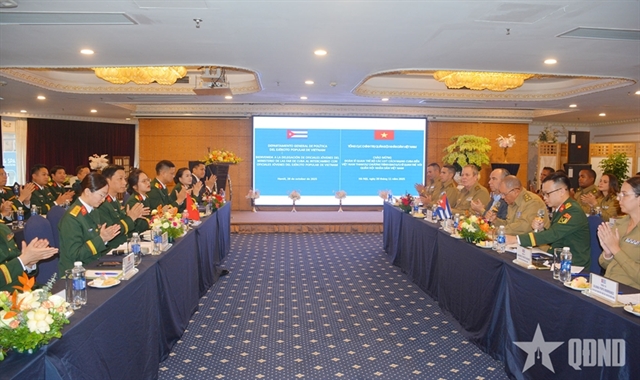 Economy
Economy


|
| Larry Lee Chio Lim, deputy general director of SABECO delivered a speech at the conference. Photo courtesy of the organiser |
HÀ NỘI — In a global market where sustainability increasingly shapes investment flows, consumer choices and regulatory expectations, green manufacturing has become more than a trend — it is now a core driver of long-term competitiveness.
For Việt Nam, this shift is not only timely, but strategically essential.
Speaking at the Sustainable Development 2025 Conference held in Hà Nội on Thursday, SABECO deputy general director Larry Lee Chio Lim said the transformations happening today will determine which industries and enterprises define Việt Nam’s next era of growth.
Around the world, sustainable finance and green industries are reshaping economic priorities. The global sustainable finance market reached US$5.87 trillion in 2024, while the green economy grew to $7.9 trillion by early 2025, representing nearly 9 per cent of all listed equity markets. Capital is increasingly directed toward companies with credible ESG strategies and measurable impact.
At the same time, consumers are signalling a decisive shift. A 2024 PwC study found that people are willing to pay nearly 10 per cent more for sustainable products, while almost half are actively reducing their environmental footprint.
“These forces — financial, regulatory and behavioural — are converging,” Lim said. “Around the world, the rules of competitiveness are fundamentally changing.”
Việt Nam is deeply aligned with this momentum through its net zero 2050 commitment, the National Green Growth Strategy and Power Development Plan VIII. But the changes required go far beyond policy ambitions — they demand industry-wide action.
Among the sectors with the greatest influence are fast-moving consumer goods and food and beverages, which together make up more than 50 per cent of Việt Nam’s national energy consumption. Their decisions shape emissions, packaging waste and supply chain behaviours nationwide.
“This is why the Ministry of Industry and Trade refers to these industries as ‘locomotive enterprises’. Their actions ripple across the entire economy,” Lim explained. “If these sectors move, Việt Nam moves. If these sectors stall, the transition stalls.”
Within this landscape, SABECO plays a pivotal leadership role. Sustainability is no longer a branding narrative, Lim said. It has become a prerequisite for market access, capital access, talent recruitment and long-term trust.
Global evidence supports this reality. Early investments in energy efficiency deliver 5–14 per cent reductions in operating expenses. Sustainable investment funds continue to outperform traditional funds, reaching $3.9 trillion in assets this year. And in the Asia-Pacific, over 60 per cent of consumers prefer brands they consider environmentally responsible.
“For SABECO, sustainability is both a growth strategy and a competitive advantage,” he added.
With 150 years of heritage, SABECO is one of Việt Nam’s most recognisable brands. But as Lim noted, its future depends on how decisively it evolves. With 25 breweries and over 200,000 outlets nationwide, the company’s sustainability efforts create impact at a national scale.
Recent milestones reflect a transformative shift in how SABECO operates. The company now uses 40.5 per cent renewable energy in production, has achieved a 9.3 per cent reduction in Scope 1 and 2 greenhouse gas emissions and improved water intensity by 7.3 per cent. Additionally, 64.2 per cent of waste is diverted from disposal, and all primary packaging is now 100 per cent recyclable or reusable.
“These numbers reflect a comprehensive transformation in how we think, operate and invest,” Lim said.
Central to SABECO’s approach is a systems-based model built on five interconnected levers: energy decarbonisation, circular packaging, water stewardship, ESG governance and community and supply chain resilience.
Lim summarised the philosophy in one line: “Sustainability only becomes real when it becomes systemic.”
SABECO’s energy transition illustrates this thinking clearly. In 2024 alone, rooftop solar systems generated 7,843MWh of clean electricity, biomass boilers helped avoid more than 7,400 tonnes of CO2 emissions and efficiency upgrades reduced electricity intensity by over 8 per cent. As a result, GHG intensity fell to 7.55kg of CO2 equivalent per hectolitre.
“These improvements strengthen our operational resilience and reduce exposure to fossil fuel volatility,” Lim said.
Water stewardship is another pillar of SABECO’s sustainability framework. In a country increasingly vulnerable to drought and climate variability, safeguarding water resources is essential for both business and community wellbeing.
SABECO achieved a 7.3 per cent reduction in water intensity, a 5.7 per cent decrease in total withdrawal, expanded rainwater harvesting systems and maintained 100 per cent compliance in wastewater management. The company is also using advanced water risk mapping to guide future investments in high-risk regions.
“As we often say, a good brewery must be a good water steward,” Lim noted.
Packaging, one of Việt Nam’s most visible environmental challenges, is also an area where SABECO is taking clear leadership. Its primary packaging is now 100 per cent recyclable or reusable, return rates for glass bottles have reached 75–80 per cent and aluminium cans have been reduced by 15 per cent in weight since 2019.
“The goal is simple: creating a system where materials never become waste, only resources,” Lim said.
Beyond operations, SABECO places strong emphasis on community impact and corporate governance. Its 'Lighting Up Rural Areas and Borders' programme spans 109 kilometres across the country, benefitting more than 75,000 people. Its Sports Hub has reached 50,000 young people, while Tết support in 2025 reached 37,500 households. The company also mobilised VNĐ4.2 billion in relief efforts after Typhoon Yagi.
Governance underpins all these efforts. SABECO has established a Board-level Sustainability and Risk Management Committee, publishes GRI-aligned ESG disclosures and reported zero data privacy breaches in 2024, alongside 100 per cent employee performance evaluations.
“Good governance is the foundation of trust, and trust is the currency of modern business,” Lim said.
Looking ahead, SABECO’s action agenda is clear: scale renewable energy, strengthen circular packaging and EPR participation, deepen water resilience, share best practices across the industry and uphold transparent, responsible governance.
Lim concluded with a message of shared responsibility: “Việt Nam’s next chapter will be defined not by the industries of the past, but by the companies that embrace transformation today. With the right policies, partnerships and commitment, Việt Nam will not only achieve a green transition — it will lead it.” — VNS




